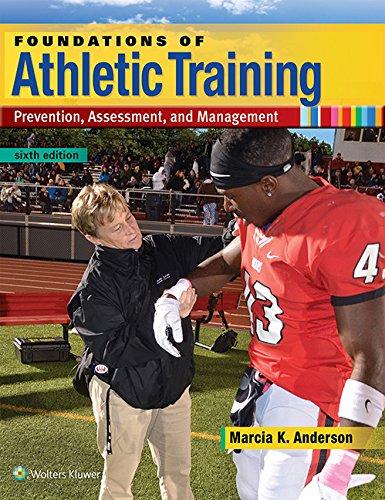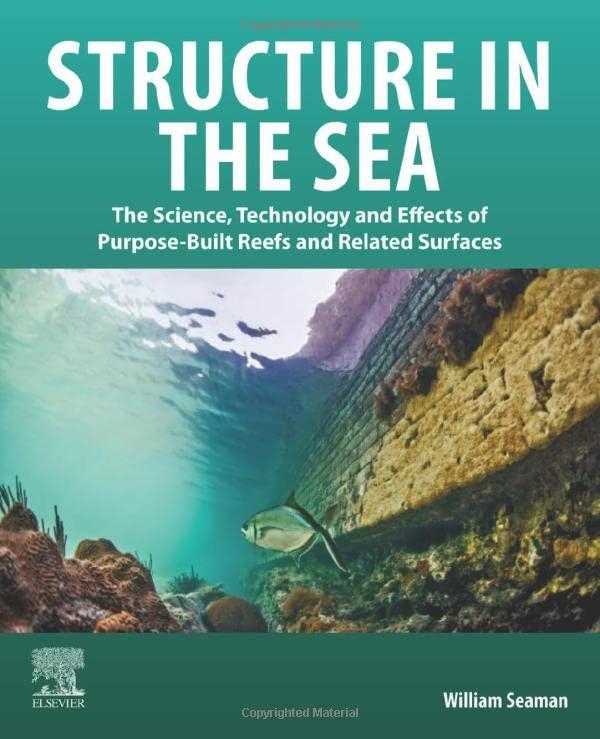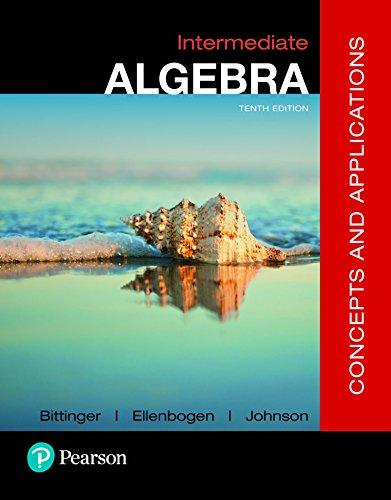https://ebookmass.com/product/fogoros-electrophysiologic-
Highland Legend Kathryn Le Veque
https://ebookmass.com/product/highland-legend-kathryn-le-veque-3/
ebookmass.com
Foundations of Athletic Training: Prevention, Assessment, and Management 6th Edition, (Ebook PDF)
https://ebookmass.com/product/foundations-of-athletic-trainingprevention-assessment-and-management-6th-edition-ebook-pdf/ ebookmass.com
Wisdom in Classical and Biblical Tradition Michael C. Legaspi
https://ebookmass.com/product/wisdom-in-classical-and-biblicaltradition-michael-c-legaspi/
ebookmass.com
Structure in the Sea: The Science, Technology and Effects of Purpose-Built Reefs and Related Surfaces William Seaman
https://ebookmass.com/product/structure-in-the-sea-the-sciencetechnology-and-effects-of-purpose-built-reefs-and-related-surfaceswilliam-seaman/ ebookmass.com
Emotion and the History of Rhetoric in the Middle Ages
Rita Copeland
https://ebookmass.com/product/emotion-and-the-history-of-rhetoric-inthe-middle-ages-rita-copeland/
ebookmass.com
Algebra: Concepts and Applications 10th Edition, (Ebook PDF)
https://ebookmass.com/product/intermediate-algebra-concepts-andapplications-10th-edition-ebook-pdf/
ebookmass.com
Thiseditionfirstpublished2023
©2023JohnWiley&SonsLtd
EditionHistory
JohnWiley&SonsLtd(6e,2018)
Allrightsreserved.Nopartofthispublicationmaybereproduced,storedinaretrievalsystem,or transmitted,inanyformorbyanymeans,electronic,mechanical,photocopying,recordingor otherwise,exceptaspermittedbylaw.Adviceonhowtoobtainpermissiontoreusematerialfrom thistitleisavailableathttp://www.wiley.com/go/permissions.
TherightofRichardN.FogorosandJohnM.Mandrolatobeidentifiedastheauthorsofthiswork hasbeenassertedinaccordancewithlaw.
RegisteredOffices
JohnWiley&Sons,Inc.,111RiverStreet,Hoboken,NJ07030,USA
JohnWiley&SonsLtd,TheAtrium,SouthernGate,Chichester,WestSussex,PO198SQ,UK
Fordetailsofourglobaleditorialoffices,customerservices,andmoreinformationaboutWiley productsvisitusatwww.wiley.com.
Wileyalsopublishesitsbooksinavarietyofelectronicformatsandbyprint-on-demand.Some contentthatappearsinstandardprintversionsofthisbookmaynotbeavailableinotherformats.
Trademarks:WileyandtheWileylogoaretrademarksorregisteredtrademarksofJohnWiley& Sons,Inc.and/oritsaffiliatesintheUnitedStatesandothercountriesandmaynotbeusedwithout writtenpermission.Allothertrademarksarethepropertyoftheirrespectiveowners.JohnWiley& Sons,Inc.isnotassociatedwithanyproductorvendormentionedinthisbook.
LimitofLiability/DisclaimerofWarranty
Thecontentsofthisworkareintendedtofurthergeneralscientificresearch,understanding,and discussiononlyandarenotintendedandshouldnotberelieduponasrecommendingor promotingscientificmethod,diagnosis,ortreatmentbyphysiciansforanyparticularpatient.In viewofongoingresearch,equipmentmodifications,changesingovernmentalregulations,andthe constantflowofinformationrelatingtotheuseofmedicines,equipment,anddevices,thereaderis urgedtoreviewandevaluatetheinformationprovidedinthepackageinsertorinstructionsfor eachmedicine,equipment,ordevicefor,amongotherthings,anychangesintheinstructionsor indicationofusageandforaddedwarningsandprecautions.Whilethepublisherandauthorshave usedtheirbesteffortsinpreparingthiswork,theymakenorepresentationsorwarrantieswith respecttotheaccuracyorcompletenessofthecontentsofthisworkandspecificallydisclaimall warranties,includingwithoutlimitationanyimpliedwarrantiesofmerchantabilityorfitnessfora particularpurpose.Nowarrantymaybecreatedorextendedbysalesrepresentatives,writtensales materialsorpromotionalstatementsforthiswork.Thefactthatanorganization,website,or productisreferredtointhisworkasacitationand/orpotentialsourceoffurtherinformationdoes notmeanthatthepublisherandauthorsendorsetheinformationorservicestheorganization, website,orproductmayprovideorrecommendationsitmaymake.Thisworkissoldwiththe understandingthatthepublisherisnotengagedinrenderingprofessionalservices.Theadviceand strategiescontainedhereinmaynotbesuitableforyoursituation.Youshouldconsultwitha specialistwhereappropriate.Further,readersshouldbeawarethatwebsiteslistedinthisworkmay havechangedordisappearedbetweenwhenthisworkwaswrittenandwhenitisread.Neitherthe publishernorauthorsshallbeliableforanylossofprofitoranyothercommercialdamages, includingbutnotlimitedtospecial,incidental,consequential,orotherdamages.
LibraryofCongressCataloging-in-PublicationDataappliedfor ISBN:9781119855675(hardback)
CoverDesign:Wiley
CoverImages:©ArtemRudik/Shutterstock;©AlexLMX/Shutterstock
Setin10/12ptWarnockProbyStraive,Chennai,India
9AblationofSupraventricularTachycardias 221
10AblationofPVCsandVentricularTachycardia 243
11AblationofAtrialFibrillation 268
12AblationofAtrialFlutter 289
13ConductionSystemPacing 310
14CardiacResynchronization:PacingTherapyforHeart Failure 318
15TheEvaluationofSyncope 330
16ElectrophysiologicTestinginPerspective:TheEvaluation andTreatmentofCardiacArrhythmias 344 Index 353
PrefacetotheSeventhEdition
Ourgoalinproducingthisseventheditionof Electrophysiologic Testing isthesameasithasbeenfromthebeginning–todemystify thefieldofcardiacelectrophysiologyforthenonelectrophysiologist. Thisbookismeantforstudents,residents,cardiologyfellows(or evencardiologists!),primarycarephysicians,physicianassistants, nurses,technicians,andanyoneelsewhoneedsabasicandrelatively quickunderstandingofelectrophysiologyandcardiacarrhythmias. Asalways,wehaveaimedtoexplain,asclearlyandsimplyaspossible, thekeyconceptsofthemechanisms,evaluation,andtreatment ofcardiacarrhythmias,aselucidatedintheelectrophysiology laboratory.
Inthisedition,wehavestriventoupdatewhatneededtobe updatedwithoutlosingsightofthatoriginal,motivatinggoal.Tokeep thingsassimpleaspossible,inthiseditionwehavedeemphasized (oreliminated)aspectsofelectrophysiologictestingthatwereonce importanttoelectrophysiologists,buttodayareofmainlyhistorical interest.Throughoutthebook,wehavefocusedonthebasicaspects ofcardiacelectrophysiologythatarecriticaltounderstandingand treatingcardiacarrhythmias.Wehavemostextensivelyupdatedthe chaptersonablationtherapy,themostrapidlyevolvingaspectof clinicalelectrophysiology.Additionally,wehaveaddedanewchapter onconductionsystempacing,whichwebelievewillbecomevery importanttocliniciansinthenearfuture.
viii PrefacetotheSeventhEdition
Wesincerelyhopeandtrustthatthisseventheditionof ElectrophysiologyTesting willremainashelpfultoanewgenerationofreaders as,wearetold,pasteditionshavebeentopreviousgenerations.
RichardN.Fogoros,MD
Danville,PA
JohnM.Mandrola,MD Louisville,KY
PartI
DisordersoftheHeartRhythm:BasicPrinciples
TheCardiacElectricalSystem
Theheartspontaneouslygenerateselectricalimpulses,andthese electricalimpulsesarevitaltoallcardiacfunctions.Onabasiclevel,by controllingthefluxofcalciumionsacrossthecardiaccellmembrane, theseelectricalimpulsestriggercardiacmusclecontraction.Ona higherlevel,theheart’selectricalimpulsesorganizethesequenceof musclecontractionsduringeachheartbeat,importantforoptimizing thecardiacstrokevolume.Finally,thepatternandtimingofthese impulsesdeterminetheheartrhythm.Derangementsinthisrhythm oftenimpairtheheart’sabilitytopumpenoughbloodtomeetthe body’sdemands.
Theheart’selectricalsystemisfundamentaltocardiacfunction.The studyoftheelectricalsystemoftheheartiscalledcardiacelectrophysiology,andthemainconcernofthefieldofelectrophysiologyisthe mechanismsandtherapyofcardiacarrhythmias.Theelectrophysiologystudy(EPstudy)isthemostdefinitivemethodofevaluatingthe cardiacelectricalsystem.Itisthesubjectofthisbook.
AsanintroductiontothefieldofelectrophysiologyandtotheEP study,thischapterreviewstheanatomyofthecardiacelectricalsystem anddescribeshowtheelectricalimpulseisgeneratedandpropagated.
Theanatomyoftheheart’selectricalsystem
Theheart’selectricalimpulseoriginatesinthesinoatrial(SA)node, locatedhighintherightatriumnearthesuperiorvenacava.The impulseleavestheSAnodeandspreadsradiallyacrossbothatria. Whentheimpulsereachestheatrioventricular(AV)groove,it encountersthe“skeletonoftheheart,”thefibrousstructuretowhich
Fogoros’ElectrophysiologicTesting,SeventhEdition.RichardN.FogorosandJohnM.Mandrola. ©2023JohnWiley&SonsLtd.Published2023byJohnWiley&SonsLtd.
thevalveringsareattached,andwhichseparatestheatriafrom theventricles.Thisfibrousstructureiselectricallyinertandacts asaninsulator–theelectricalimpulsecannotcrossthisstructure. Theelectricalimpulsewouldbepreventedfromcrossingoverto theventricularsideoftheAVgrooveifnotforthespecializedAV conductingtissues:theAVnodeandthebundleofHis(Figure1.1).
AstheelectricalimpulseenterstheAVnode,itsconductionis slowedbecauseoftheelectrophysiologicpropertiesoftheAVnodal tissue.ThisslowingisreflectedinthePRintervalonthesurface electrocardiogram(ECG).LeavingtheAVnode,theelectricalimpulse enterstheHisbundle,themostproximalpartoftherapidlyconductingHis–Purkinjesystem.TheHisbundlepenetratesthefibrous skeletonanddeliverstheimpulsetotheventricularsideoftheAV groove.
Onceontheventricularside,theelectricalimpulsefollowstheHis bundleasitbranchesintotherightandleftbundlebranches.BranchingofthePurkinjefiberscontinuesdistallytothefurthermostreaches
SA node
His bundle Purkinje fibers
Fibrous skeleton of the heart
oftheventricularmyocardium.Theelectricalimpulseisthusrapidly distributedthroughouttheventricles.
The“job”oftheheart’selectricalsystemistoorganizethesequence ofmyocardialcontractionwitheachheartbeat.First,astheelectricalimpulsespreadsovertheatriatowardtheAVgroove,theatria contract.ThedelayprovidedbytheAVnodeallowsforcompleteatrial emptyingbeforetheelectricalimpulsereachestheventricles.Once theimpulseleavestheAVnode,itisdistributedrapidlythroughout theventricularmusclebythePurkinjefibers,providingforbriskand orderlyventricularcontraction.
Wenextconsiderthecharacteroftheelectricalimpulse,its generation,anditspropagation.
Thecardiacactionpotential
Thecardiacactionpotentialisoneofthemostmisunderstoodtopics incardiology.Thefactthatelectrophysiologistsclaimtounderstandit isalsoaleadingcauseofthemystiquethatsurroundsthemandtheir favoritetest,theEPstudy.Sincethepurposeofthisbookistodebunk themysteryofelectrophysiologystudies,wemustgainabasicunderstandingofthecardiacactionpotential.Fortunately,it’seasierthan legendwouldhaveit.
Althoughmostofuswouldliketothinkofcardiacarrhythmiasasan irritationor“itch”oftheheart(andofantiarrhythmicdrugsasabalm orasalvethatsoothestheitch),thisnotionofarrhythmiasiswrong andcanleadtothefaultymanagementofpatientswitharrhythmias. Infact,thebehavioroftheheart’selectricalimpulseandofthecardiac rhythmislargelydeterminedbytheshapeoftheactionpotential;the effectofantiarrhythmicdrugsisdeterminedbyhowtheychangethat shape.
Theinsideofthecardiaccell,likealllivingcells,hasanegative electricalchargecomparedtotheoutsideofthecell.Theresulting voltagedifferenceacrossthecellmembraneiscalledthe transmembranepotential .Therestingtransmembranepotential(whichis 80 to 90mVincardiacmuscle)istheresultofanaccumulationof negativelychargedmolecules(calledions)withinthecell.Mostofthe body’scellsarehappywiththisarrangementandliveouttheirlives withoutconsideringanyotherpossibilities.
Figure1.2 Thecardiacactionpotential.
Cardiaccells,however,aredifferent–theyareexcitablecells.When excitablecellsarestimulatedappropriately,tinyporesorchannels inthecellmembraneopenandclosesequentiallyinastereotyped fashion.Theopeningofthesechannelsallowsionstotravelback andforthacrossthecellmembrane(againinastereotypedfashion), leadingtopatternedchangesinthetransmembranepotential.When thesestereotypicvoltagechangesaregraphedagainsttime,theresult isthecardiacactionpotential(Figure1.2).Theactionpotential reflectstheelectricalactivityofasinglecardiaccell.
Figure1.2showsthefivephasesoftheactionpotential,which encompassthreegeneralperiods:depolarization,repolarization,and therestingphase.
Depolarization
Thedepolarizationphase(phase0)iswherethe“action”oftheaction potentialis.Depolarizationoccurswhentherapidsodiumchannelsin thecellmembranearestimulatedtoopen.Whenthishappens,positivelychargedsodiumionsrushintothecell,causingarapid,positively directedchangeinthetransmembranepotential.Theresultantvoltage
spikeiscalled depolarization.Whenwespeakoftheheart’selectrical impulse,wearespeakingofthisdepolarization.
Depolarizationofonecelltendstocauseadjacentcardiaccellsto depolarize,becausethevoltagespikeofacell’sdepolarizationcauses thesodiumchannelsinthenearbycellstoopen.Thus,onceacardiac cellisstimulatedtodepolarize,thewaveofdepolarization(theelectricalimpulse)ispropagatedacrosstheheart,cellbycell.
Thespeedofdepolarizationofacell(reflectedbytheslopeofphase 0oftheactionpotential)determineshowsoonthenextcellwilldepolarize,andthusdeterminesthespeedatwhichtheelectricalimpulseis propagatedacrosstheheart.Ifwedosomethingtochangethespeedat whichsodiumionsenterthecell(andthuschangetheslopeofphase0), wethereforechangethespeedofconduction(theconductionvelocity) ofcardiactissue.
Repolarization
Onceacellisdepolarized,itcannotbedepolarizedagainuntiltheionic fluxesthatoccurduringdepolarizationarereversed.Theprocessof gettingtheionsbacktowheretheystartediscalled repolarization. Therepolarizationofthecardiaccellroughlycorrespondstophases 1through3(i.e.,thewidth)oftheactionpotential.Becauseasecond depolarizationcannottakeplaceuntilrepolarizationoccurs,thetime fromtheendofphase0tolateinphase3iscalledthe refractoryperiod ofcardiactissue.
Repolarizationofthecardiaccellsiscomplexandincompletely understood.Themainideasbehindrepolarization,however,are simple.
• Repolarizationreturnsthecardiacactionpotentialtotheresting transmembranepotential.
• Ittakestimetodothis.
• Thetimethatittakestodothis,roughlycorrespondingtothewidth oftheactionpotential,istherefractoryperiodofcardiactissue.
Thereisanadditionalpointofinterestregardingrepolarization ofthecardiacactionpotential.Phase2oftheactionpotential,the so-calledplateauphase,canbeviewedasinterruptingandprolonging therepolarizationthatbeginsinphase1.Thisplateauphase,which isuniquetocardiaccells(e.g.,itisnotseeninnervecells),gives durationtothecardiacpotential.Itismostlymediatedbytheslow
usuallysecondarypacemakercells(oftenlocatedintheAVjunction) totakeoverthepacemakerfunctionoftheheart,butataslowerrate. Thus,theshapeoftheactionpotentialdeterminestheconduction velocity,refractoryperiod,andautomaticityofcardiactissue.Later, wewillseehowthesethreeelectrophysiologiccharacteristicsdirectly affectthemechanismsofcardiacrhythms,bothnormalandabnormal.Toalargeextent,thepurposeoftheEPstudyistoassessthe conductionvelocities,refractoryperiods,andautomaticityofvarious portionsoftheheart’selectricalsystem.
Localizedvariationsintheheart’selectrical system
Inunderstandingcardiacarrhythmias,itisimportanttoconsider twoissuesinvolvinglocalizeddifferencesintheheart’selectrical system:variationsintheactionpotentialandvariationsinautonomic innervation.
Localizeddifferencesintheactionpotential
Differentcardiaccellshavedifferentlyshapedactionpotentials.The actionpotentialwehavebeenusingasamodel(seeFigure1.2)isa
Figure1.4 Localizeddifferencesinthecardiacactionpotential.Cardiacaction potentialsfromdifferentlocationswithinthehearthavedifferentshapes.These differencesaccountforthedifferencesseenintheelectrophysiologicproperties ofvarioustissueswithintheheart.
SA node
AV nodePurkinje fiberVentricular muscle
Atrial muscle
typicalPurkinjefiberactionpotential.Figure1.4showsrepresentative actionpotentialsfromseveralkeylocationsoftheheart–notethe differencesinshape.
TheactionpotentialsthatdiffermostradicallyfromthePurkinje fibermodelarefoundintheSAandAVnodes.Notethattheaction potentialsfromthesetissueshaveslowinsteadofrapiddepolarization phases(phase0).ThisslowdepolarizationoccursbecauseSAand AVnodaltissueslacktherapidsodiumchannelsresponsibleforthe rapiddepolarizationphase(phase0)seeninothercardiactissues.In fact,theSAandAVnodesarethoughttobeentirelydependenton theslowcalciumchannelfordepolarization.Becausethespeedof depolarizationdeterminesconductionvelocity,theSAandAVnodes
Figure1.5 Relationshipbetweentheventricularactionpotential(top)andthe surfaceECG(bottom).Therapiddepolarizationphase(phase0)oftheaction potentialisreflectedintheQRScomplexonthesurfaceECG.Becausephase0is almostinstantaneous,theQRScomplexyieldsdirectionalinformationon ventriculardepolarization.Incontrast,therepolarizationportionoftheaction potentialhassignificantduration(phases2and3).Consequently,theportionof thesurfaceECGthatreflectsrepolarization(theSTsegmentandTwave)yields littledirectionalinformation.PRinterval,beginningofPtobeginningofQRS;ST segment,endofQRStobeginningofT;QTinterval,beginningofQRStoendofT.
conductelectricalimpulsesslowly.TheslowconductionintheAV nodeisreflectedinthePRintervalonthesurfaceECG(Figure1.5).
Localizeddifferencesinautonomicinnervation
Ingeneral,anincreaseinsympathetictone,forexampleduring exercise,causesenhancedautomaticity(pacemakercellsfiremore rapidly),increasedconductionvelocity(electricalimpulsesarepropagatedmorerapidly),anddecreasedactionpotentialdurationand thusdecreasedrefractoryperiods(cellsbecomereadyforrepeated depolarizationsmorequickly).Parasympathetictonehastheopposite effect(i.e.,depressedautomaticity,decreasedconductionvelocity, andincreasedrefractoryperiods).
Sympatheticandparasympatheticfibersrichlyinnervateboththe SAandtheAVnode.Intheremainderoftheheart’selectricalsystem, whilesympatheticinnervationisabundant,parasympatheticinnervationisrelativelysparse.Thus,changesinparasympathetictonehavea relativelygreatereffectontheSAandAVnodaltissuesthanonother tissuesoftheheart.Thisfacthasimplicationsforthediagnosisand treatmentofsomeheartrhythmdisturbances.
Relationshipbetweenactionpotential andsurfaceECG
Thecardiacactionpotentialrepresentstheelectricalactivityofasinglecardiaccell.ButthesurfaceECGreflectstheelectricalactivityof theentireheart–essentially,thesumofalltheactionpotentialsofall cardiaccells.Consequently,theinformationonecangleanfromthe surfaceECGderivesfromthecharacteristicsoftheactionpotential (seeFigure1.5).
Formostcardiaccells,thedepolarizationphaseoftheaction potentialisessentiallyinstantaneous(occurringin1–3ms)and occurssequentially,fromcelltocell.Thus,theinstantaneouswave ofdepolarizationcanbefollowedacrosstheheartbystudyingthe ECG.ThePwaverepresentsthedepolarizationfrontasittraverses theatria,andtheQRScomplextracksthewaveofdepolarizationas itspreadsacrosstheventricles.Changesinthespreadoftheelectricalimpulse,suchasoccurinbundlebranchblockortransmural
myocardialinfarction,canbereadilydiagnosedbyinspectingthe ECG.Becausethedepolarizationphaseoftheactionpotentialis relativelyinstantaneous,thePwaveandtheQRScomplexcanyield specificdirectionalinformation(i.e.,informationonthesequenceof depolarizationofcardiacmuscle).
Incontrast,therepolarizationphaseoftheactionpotentialisnot instantaneous–indeed,repolarizationhassignificantduration.While depolarizationoccursfromcelltocellsequentially,repolarization occursinmanycardiaccellssimultaneously.Forthisreason,theST segmentandTwave(theportionsofthesurfaceECGthatreflect ventricularrepolarization)givelittledirectionalinformation,and abnormalitiesintheSTsegmentsandTwavesaremostoften(and quiteproperly)interpretedasbeingnonspecific.TheQTinterval representsthetimeofrepolarizationoftheventricularmyocardium andreflectstheaverageactionpotentialdurationofventricular muscle.
AbnormalHeartRhythms
Abnormalitiesintheelectricalsystemoftheheartresultintwogeneral typesofcardiacarrhythmia:heartrhythmsthataretooslow(bradyarrhythmias)andheartrhythmsthataretoofast(tachyarrhythmias).
Bradyarrhythmias
Therearetwobroadcategoriesofabnormallyslowheartrhythms–the failureofpacemakercellstogenerateappropriateelectricalimpulses (disordersofautomaticity)andthefailuretopropagateelectrical impulsesappropriately(heartblock).
Failureofimpulsegeneration
Failureofsinoatrial(SA)nodalautomaticity,resultinginaninsufficientnumberofelectricalimpulsesemanatingfromtheSAnode (i.e.,sinusbradycardia[Figure2.1]),isthemostcommoncauseof bradyarrhythmias.Iftheslowedheartrateisinsufficienttomeetthe body’sdemands,symptomsresult.Symptomaticsinusbradycardia iscalled sicksinussyndrome.Ifsinusslowingisprofound,subsidiary pacemakerslocatedneartheatrioventricular(AV)junctioncantake overthepacemakerfunctionoftheheart.Theelectrophysiologystudy (EPstudy),aswewillseeinChapter5,canbeusefulinassessingSA nodalautomaticity.
Fogoros’ElectrophysiologicTesting,SeventhEdition.RichardN.FogorosandJohnM.Mandrola. ©2023JohnWiley&SonsLtd.Published2023byJohnWiley&SonsLtd.
Figure2.3 Examplesofescapepacemakers.WhenblockislocalizedtotheAV node(toptracing),junctionalescapepacemakers(JE)areusuallystableenough topreventhemodynamiccollapse.Whenblockislocatedinthedistalconducting tissues(bottomtracing),escapepacemakersareusuallylocatedintheventricles (VE)andareslowerandmuchlessstable.
theventriclesisintermittent;thatis,someimpulsesareconducted andsomeareblocked.Third-degreeAVblockmeansthatblockis completeandnoatrialimpulsesareconductedtotheventricles.
Ifthird-degreeAVblockispresent,thensustaininglifedepends onthefunctionofsubsidiarypacemakersdistaltothesiteofblock. Thecompetenceofthesesubsidiarypacemakers,andthereforethe patient’sprognosis,dependslargelyonthesiteofblock(Figure2.3). WhenblockiswithintheAVnode,subsidiarypacemakersatthe AVjunctionusuallytakeoverthepacemakerfunctionoftheheart, resultinginarelativelystable,nonlife-threateningheartrhythm,with aratethatcanexceed50beats/min.Ontheotherhand,ifblockis distaltotheAVnode,thesubsidiarypacemakerstendtoproducea profoundlyslow(usuallylessthan40beats/min)andunstableheart rhythm.
Ifheartblockislessthancomplete(i.e.,firstorseconddegree),it isstillimportanttopinpointthesiteofblocktoeithertheAVnode ortheHis–Purkinjesystem.First-orsecond-degreeblockintheAV nodeisbenignandtendseithernottoprogressortoprogressslowly. Permanentpacingisrarelyrequired.First-andespeciallyseconddegreeblockdistaltotheAVnode,ontheotherhand,tendtoprogress toahigherdegreeofblockandprophylacticpacingcanbeindicated iftherearesymptoms.
DifferentiatingthesiteofheartblockcanusuallybedonenoninvasivelybystudyingthesurfaceECGandtakingadvantageofthefactthat
theAVnodehasrichautonomicinnervationandtheHis–Purkinje systemdoesnot.Sometimes,however,theEPstudyisusefulin locatingthesiteofblock.Chapter5considersheartblockindetail.
Tachyarrhythmias
Cardiactachyarrhythmiascancausesignificantmortalityandmorbidity.ItistheabilityoftheEPstudytoaddresstheevaluationand treatmentoftachyarrhythmiasthathasbroughtthisprocedureinto widespreaduse.Wewilldiscussthreemechanismsfortachyarrhythmias:automaticity,reentry,andtriggeredactivity.
Automaticity
Automaticityaccountsfornormalpacemakerfunctionoftheheart. Butwhenabnormalaccelerationofphase4activityoccursinsome locationoftheheart,anautomatictachyarrhythmiaissaidtooccur (Figure2.4).Suchanabnormalautomaticfocuscanoccuranywhere intheheart.
Automaticityaccountsforlessthan10%ofallabnormaltachyarrhythmias.Automatictachyarrhythmiasareusuallyrecognizable bytheircharacteristicsandthesettingsinwhichtheyoccur.
Tounderstandautomatictachyarrhythmias,ithelpstoconsider thecharacteristicsofsinustachycardia,whichisa normal automatic tachycardia.Sinustachycardiausuallyoccursasaresultofappropriatelyincreasedsympathetictone(forinstance,inresponseto increasedmetabolicneedsduringexercise).Whensinustachycardia develops,theheartrategraduallyincreasesfromthebasic(resting)
Figure2.4 Abnormalautomaticitycausestherapidgenerationofaction potentialsandthusinappropriatetachycardia.












